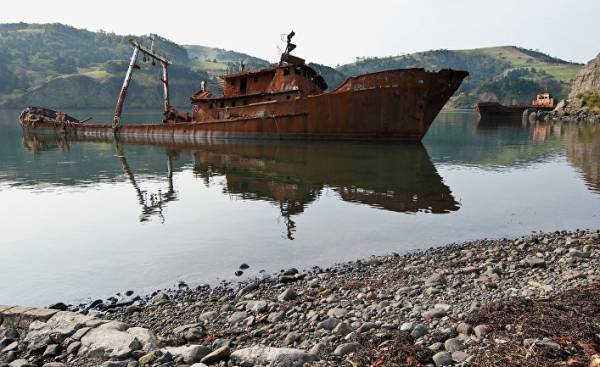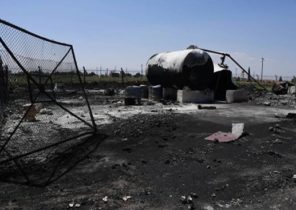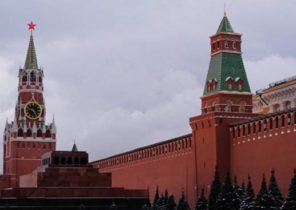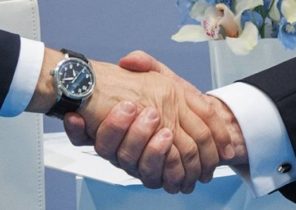
During the cold war and bipolarity had no chance to talk about bilateral cooperation between the Soviet Union and Japan due to the fact that the countries were in “the opposite trenches”, not to mention the existence between the old border disputes. It was hoped that after the collapse of the Soviet Union, Moscow and Tokyo will be able to find a civilized solution to these long-standing problems, and thus more time to build relationships on a solid Foundation, especially when you consider the fact that both countries are “heavyweights” in the political, economic and scientific fields. Indeed, since the beginning of the new Millennium, observers pointed out, two States are connected by various forms of cooperation in economic, trade, technical, cultural, oil fields and in the sphere of security. In addition, it should be mentioned that the parties have initiated joint investment projects. In particular, Japan was the eighth largest investor in Russia: the country invests in the creation of transport networks, construction projects for pipeline networks and plants producing Toyota brand cars and spare parts. This is despite the fact that the political ambitions of both parties and the absence of a signed peace Treaty between them after the Second world war destroyed their relationship in which a period of calm and then followed by a period of tension.
The main point of contention of the parties was the sovereignty over the Kuril Islands, which stretch 1,200 kilometers from the Russian Kamchatka Peninsula to the Japanese island of Hokkaido in the far North-East Asia. On these Islands with a total area of about 15.5 square kilometers and a population that is more than 20 thousand people, there are large reserves of oil, gas and minerals (including rare metals such as metal rhenium, which is nowhere in the world except on the island of Iturup, an area of three thousand square kilometers). In addition, there are huge stocks of marine resources (estimated annually from the waters around the Kuril Islands caught about 1.6 million tons of fish). Finally, the Islands are an important strategic military location, so it is not surprising that they again and again be the reason for the conflict. We say “again and again” because this conflict has a long history.
In the mid-nineteenth century, was signed the “Treaty of Shimoda”, according to which the southern Kuril Islands were given to Japan, and the North — tsarist Russia, while Sakhalin was to be under joint control. After two decades in 1875 was signed the St. Petersburg Treaty by which Russia ceded to Japan all of the Kuril Islands in exchange to obtain sovereignty over the island of Sakhalin. During the Russo-Japanese war (1904 — 1905), which ended with Russia’s defeat, Japan has tightened control over the territory of the South Kuril Islands, and Sakhalin. However, these areas became part of the Soviet Union in 1945 during the Second world war in the framework of the agreements reached at the Crimea (Yalta) conference. In 1951, a defeated Japan and the allied Nations signed the San Francisco peace Treaty: the Japanese side refused the right to sovereignty over the Kuril Islands. However, the Soviet Union refused to sign an agreement that later gave Japan an opportunity to argue that the southern part of the Kuril Islands (four Islands: Habomai, Shikotan, Kunashir, Iturup) is not part of the Kuril ridge, which she refused, and therefore the Japanese have the right to return them.
In 1956, the joint statement of the two governments to restore diplomatic relations. Moscow declared that it agreed with the return to Japan two of four Islands, which it claims to be, namely Shikotan and Habomai, subject to signing a formal peace Treaty to end the mutual claims and end any foreign presence in Japan. However, Tokyo rejected the proposal under pressure from its ally, the United States, which at that time were in a state of “cold war” with Moscow. In particular, Tokyo announced that it would not accept the Soviet conditions, because the Japanese have regional and historical rights to all the Southern Kuriles, and Sakhalin island.
In recent years the problem of the Kuril Islands and Sakhalin island again came to the fore. However, the reason for this is not the fact that the security service of Russia announced the arrest of a Russian citizen, as well as several citizens of Central Asian republics, supporters of the “Islamic state” (banned in Russia — approx. ed.) that were in the verge of carrying out terrorist operations in the heart of oil and gas on Sakhalin.
All about Moscow’s decision to expand its military presence in the Kuril Islands, namely to deploy an additional group of Russian forces, in connection with which Tokyo using diplomatic channels protested, calling the decision “regrettable.” In response, Moscow was quick to remind the Japanese side that the Kuril Islands are Russian territory, so Russia has the right to use them as it sees fit for the protection of the state.
Thus, the developments will have negative consequences for relations between the two countries, in my opinion, similar to what happened in February this year, when Moscow decided to call a number of the Kuril Islands in honor of the generals who contributed to the victory over Japan during the war. So, among them General Kuzma Derevyanko signed the document of surrender of Japan at the end of the Second world war, General Alexei Gnecco, one of the leading military leaders who participated in the Russian-Japanese war. In this regard, it is worth noting that this event has become an obstacle to the implementation of the initiative, which the head of the Japanese government Shinzo Abe spoke during a visit of Russian President Vladimir Putin in Tokyo in mid-December, 2016. According to her, it was supposed to produce the machinery required for the expansion and strengthening of economic activities on the Kuril Islands, which would be a first step towards final resolution of the controversy surrounding them, as well as the signing of a peace Treaty between the two countries.
In the end, the question arises, who are deterred at the moment when suddenly there is a glimmer of hope for improving Russian-Japanese relations and the elimination of the only obstacle to cooperation between the two countries?







